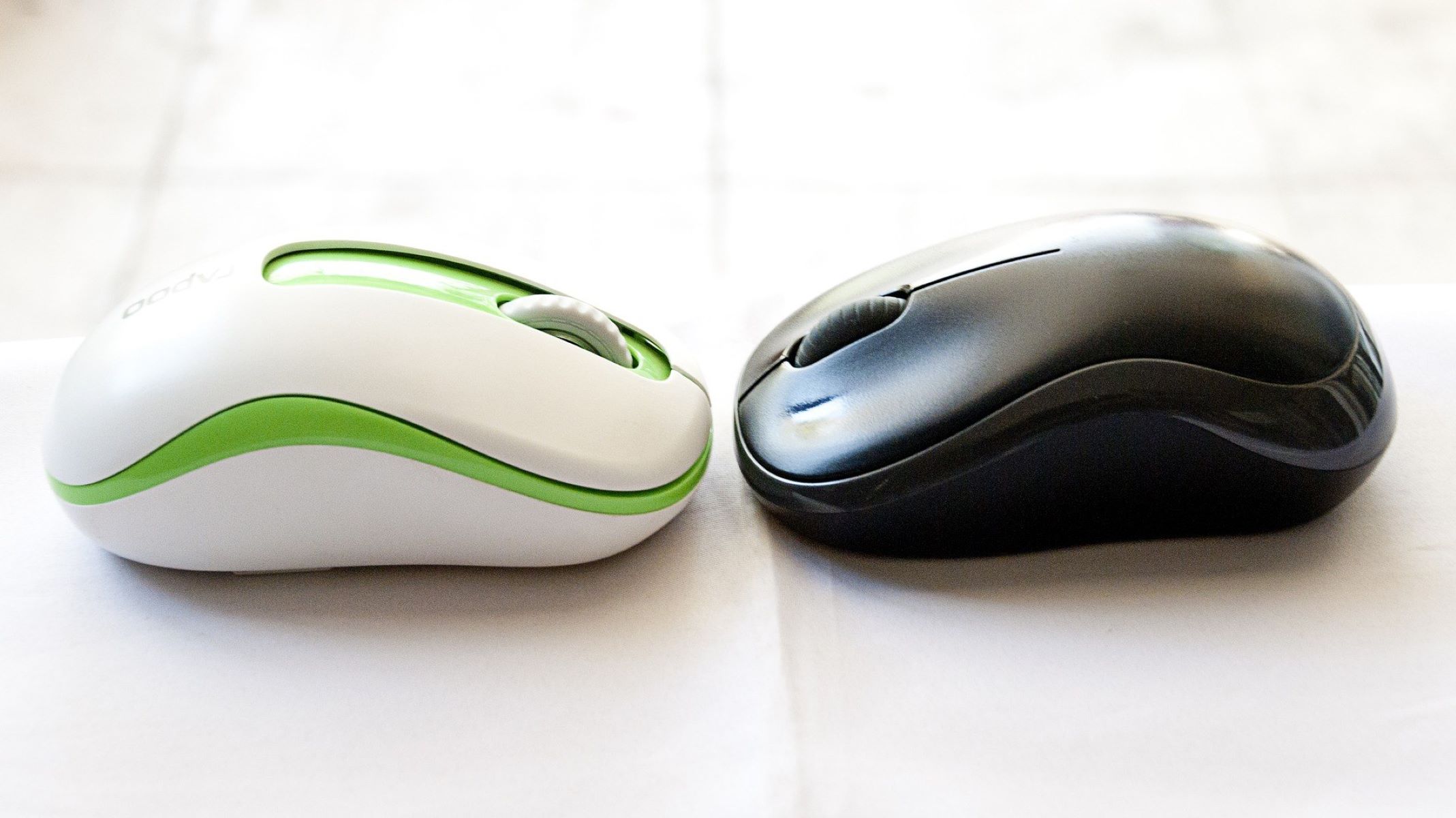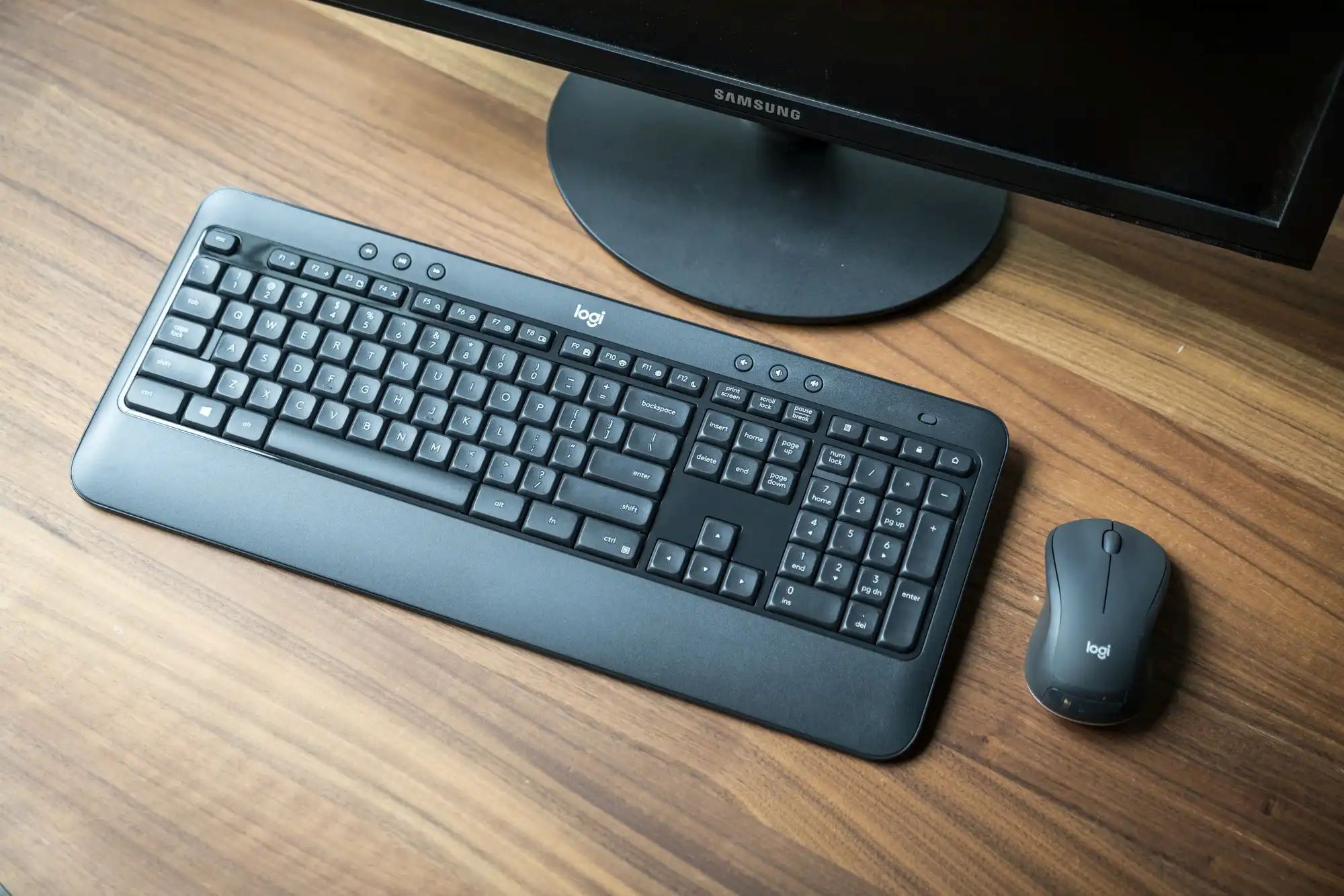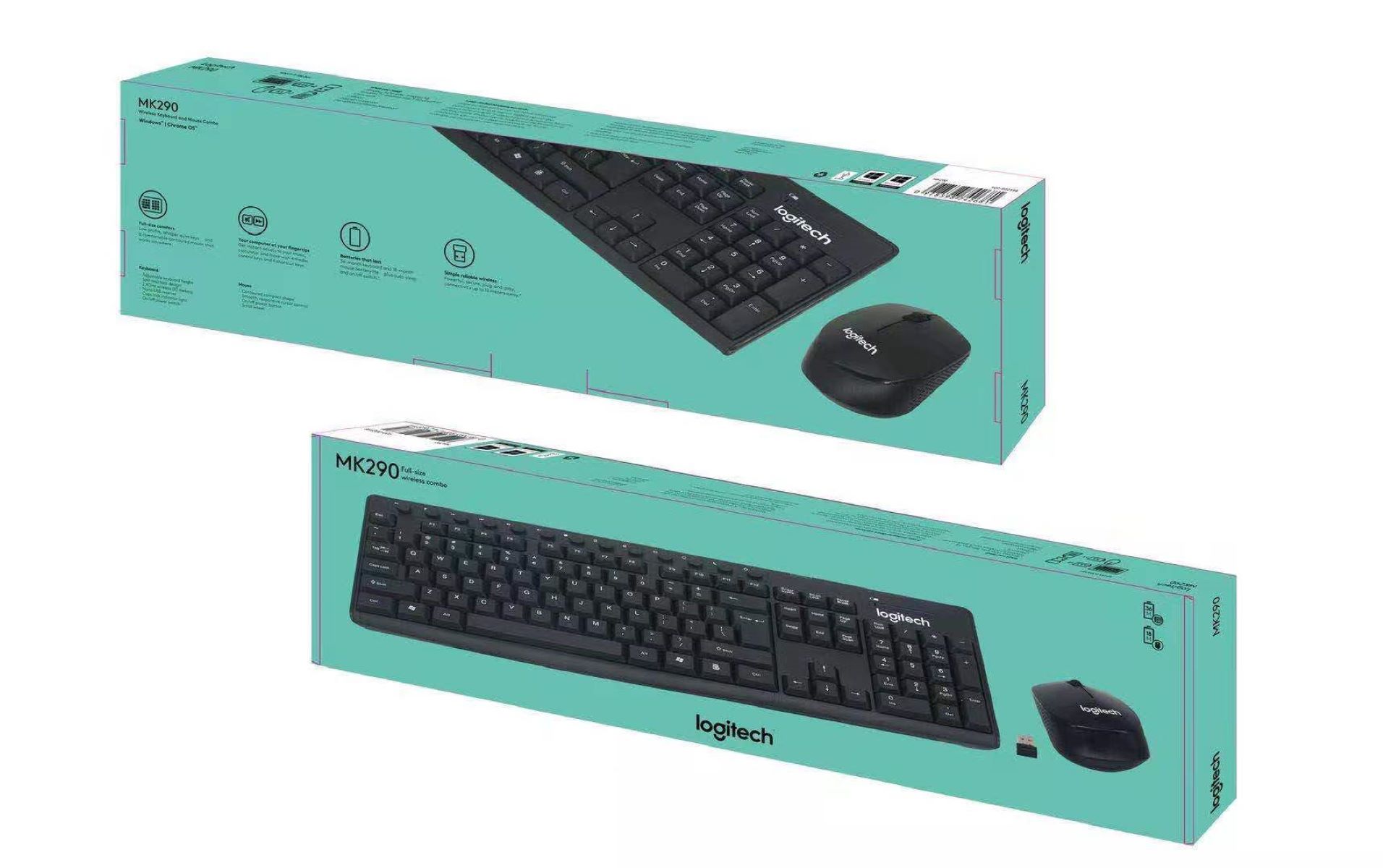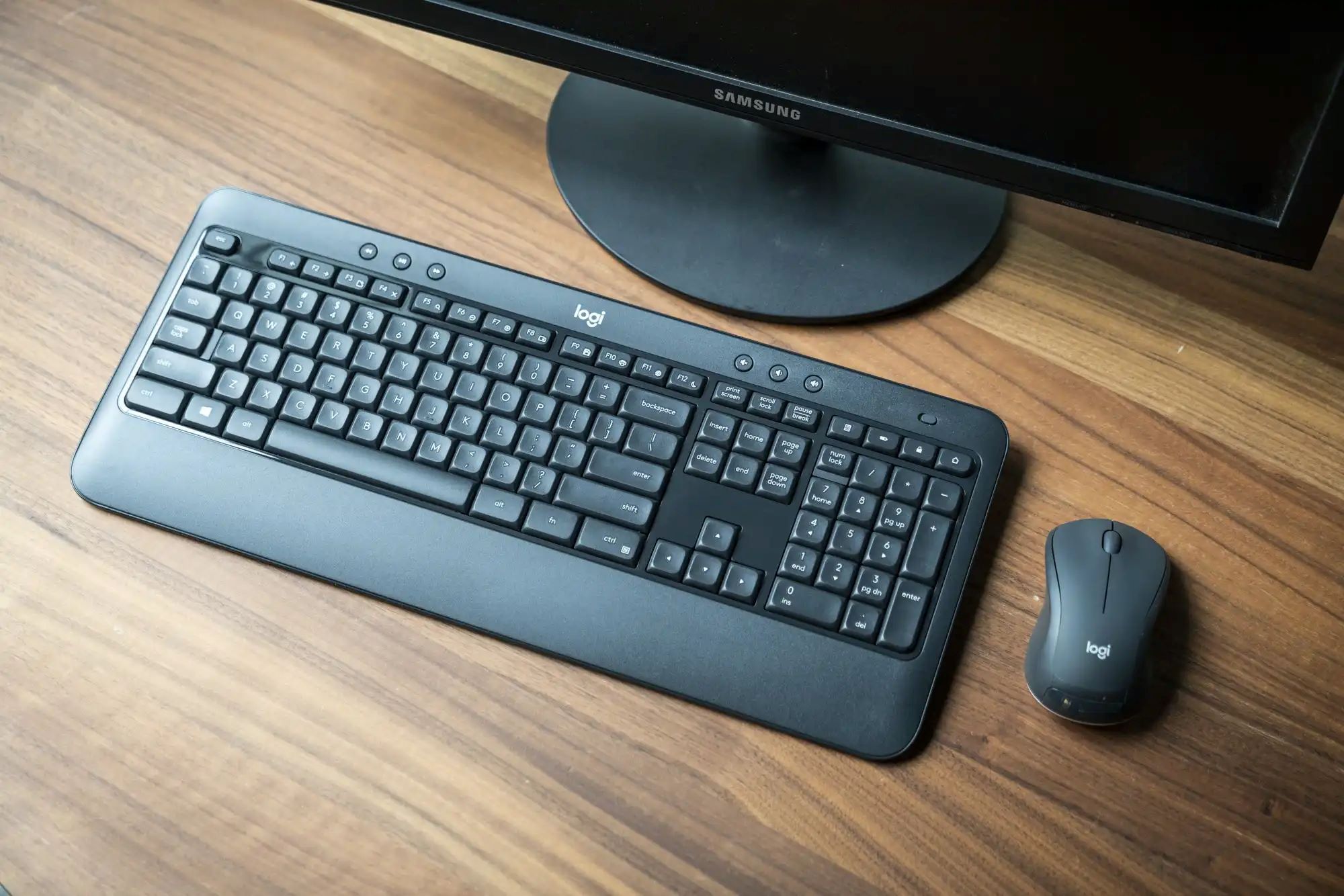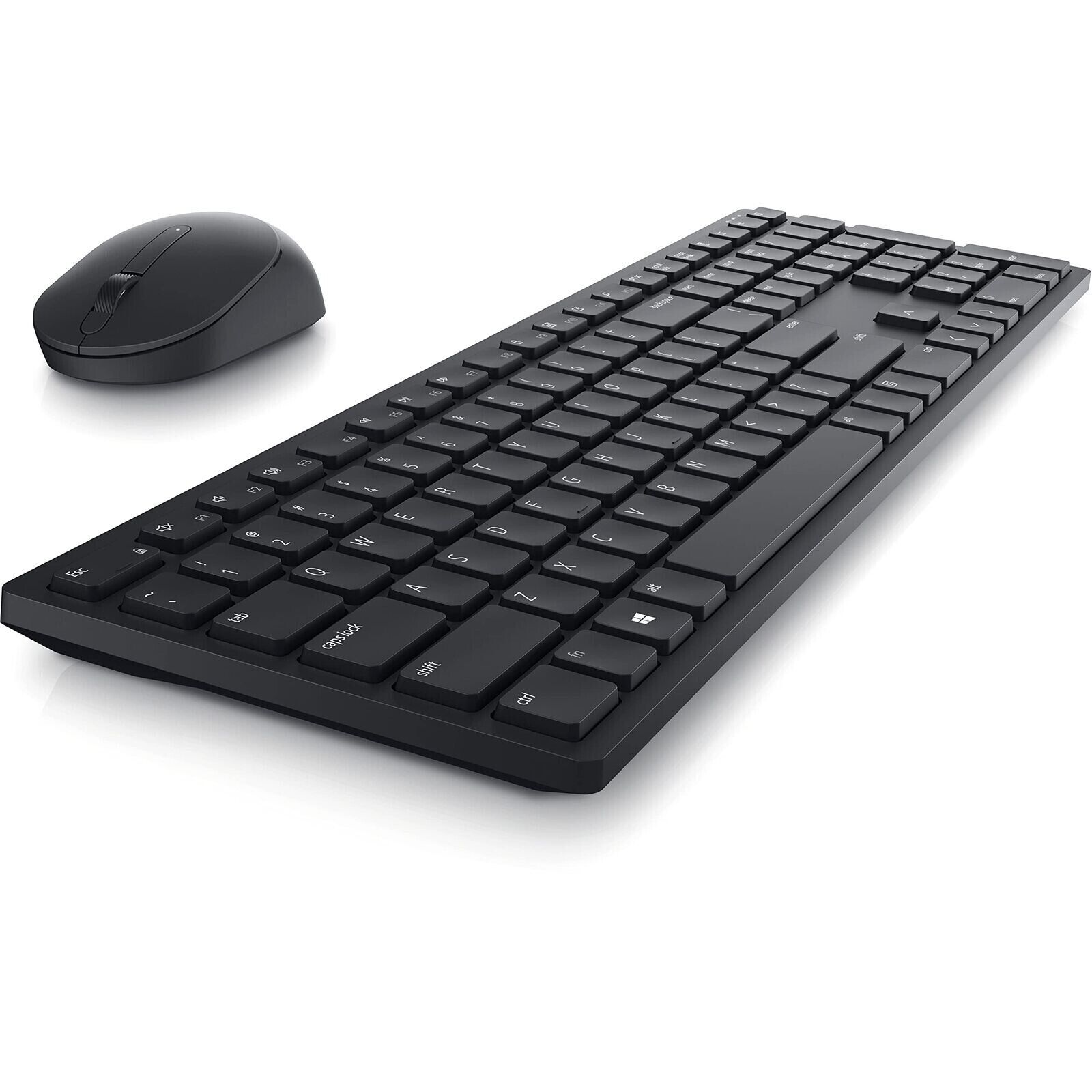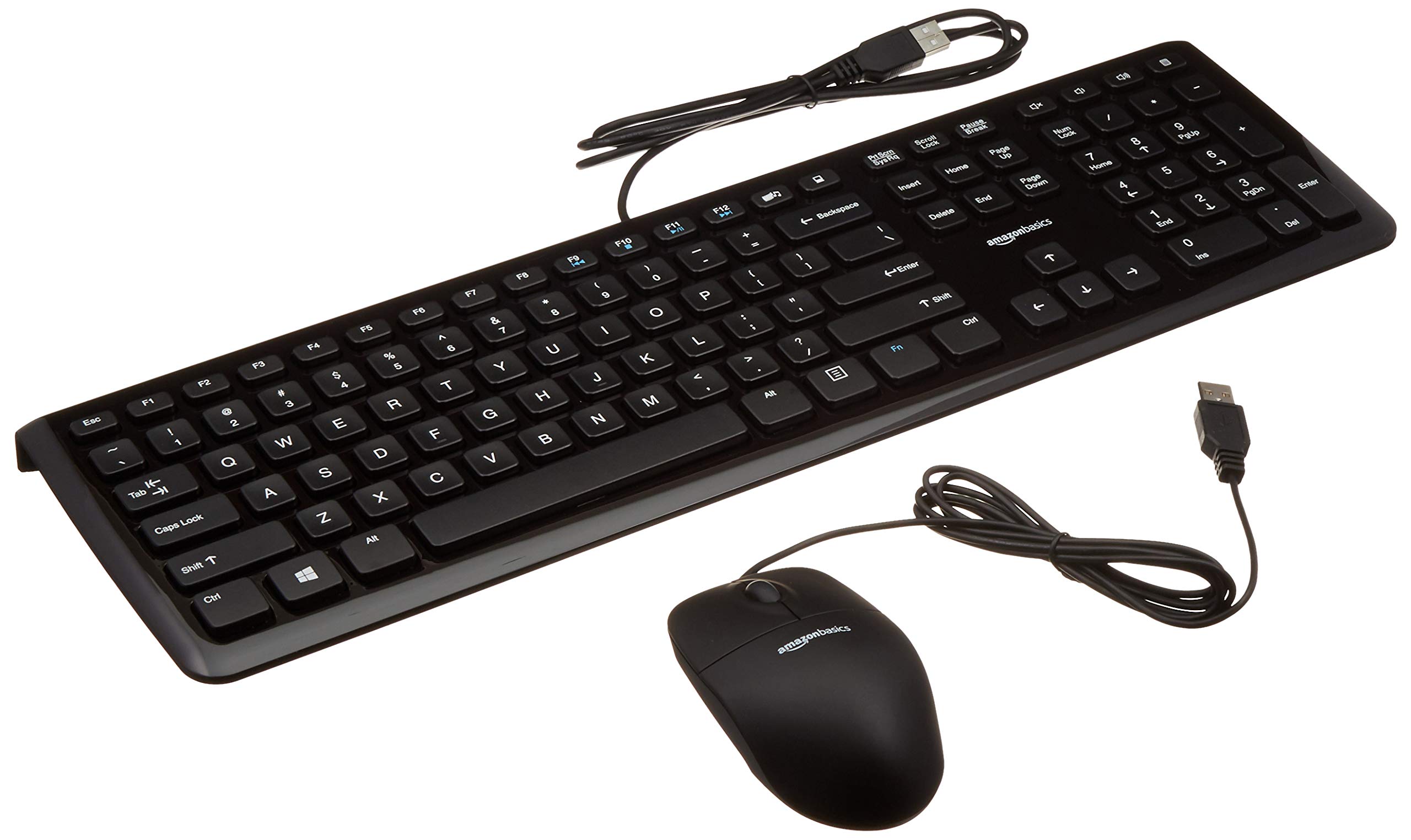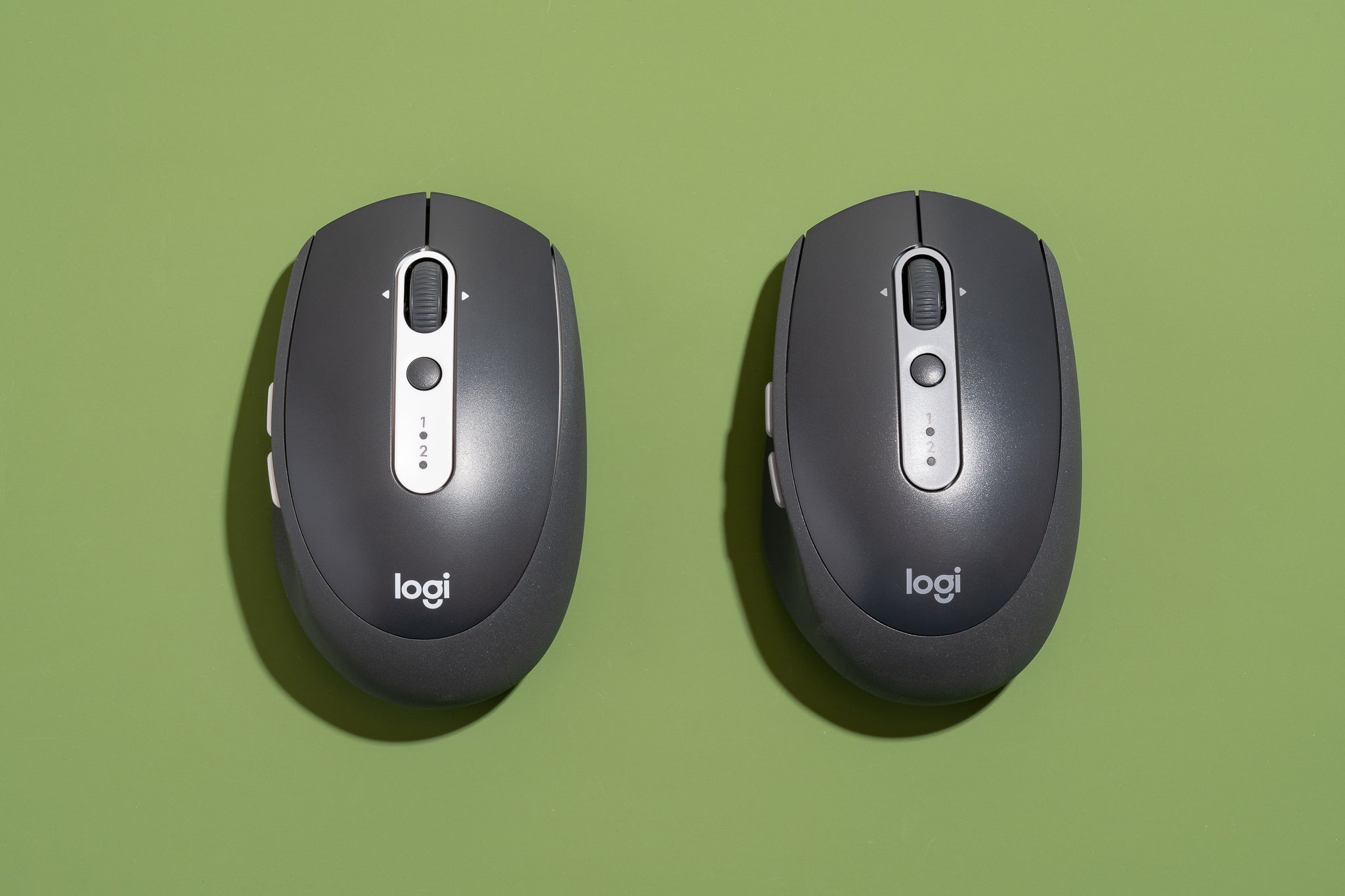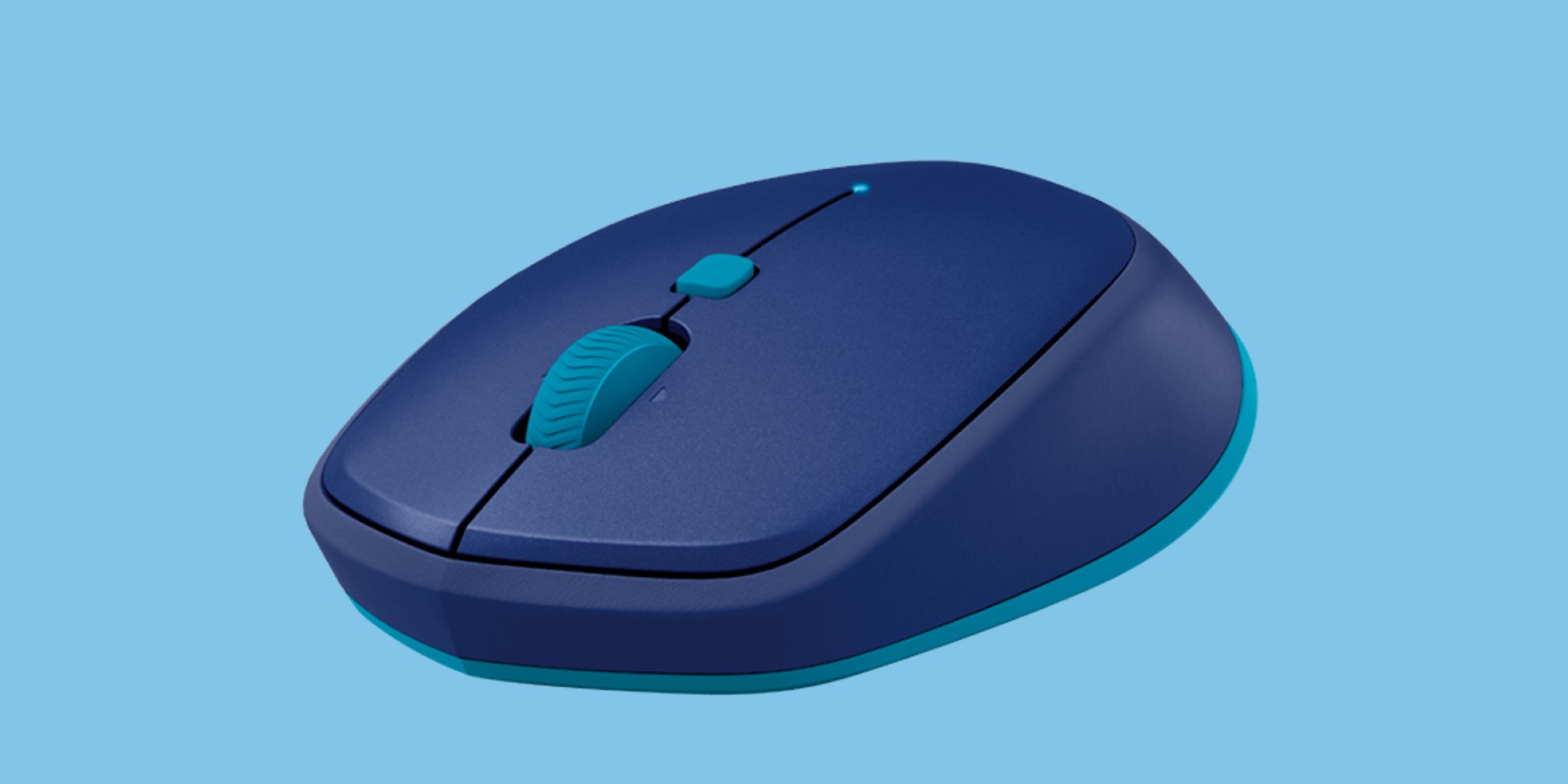Introduction
Wireless mice have become an essential accessory for anyone using a computer. Whether you’re a gamer, a professional, or a casual user, the convenience of a wireless mouse cannot be overstated. Unlike their wired counterparts, wireless mice offer freedom of movement, allowing you to navigate your computer without being constrained by cables.
But have you ever wondered how wireless mice actually work? How do they communicate with your computer without physical connections? In this article, we will demystify the inner workings of wireless mice, explaining the technology behind them in simple terms.
Before we delve into the specifics, it’s worth noting that there are different types of wireless mice available on the market. However, the common thread among all wireless mice is their ability to function without the need for a physical connection. This is achieved through the implementation of various technologies like Bluetooth, radio frequency, and optical sensors.
So, if you’re ready to dive into the world of wireless mice and uncover the secrets behind their operation, let’s explore the fascinating technology that powers these handy peripherals.
How Wireless Mouse Work: Explained in Simple Terms
Wireless mice operate on the principle of transmitting information from the mouse to the computer wirelessly. This involves the use of various technologies to ensure seamless communication between the two devices. Let’s take a closer look at the key components and mechanisms that enable the functioning of wireless mice.
-
Bluetooth Technology: The Backbone of Wireless Mice
Bluetooth technology is widely used in wireless mice to establish a connection between the mouse and the computer. Bluetooth enables low-power, short-range wireless communication, making it an ideal choice for wireless peripherals. By pairing the mouse with the computer through Bluetooth, they can communicate and exchange data effortlessly. -
Optical Sensors: Tracking Movements with Precision
Wireless mice typically employ optical sensors to track their movements. These sensors use light-emitting diodes (LEDs) to illuminate the surface beneath the mouse. The light reflected back is captured by a sensor, which then translates the movement into digital signals. This information is sent wirelessly to the computer, allowing the cursor to respond accurately to the mouse’s movements. -
Radio Frequency (RF) Technology: Seamless Connectivity from a Distance
Some wireless mice utilize radio frequency (RF) technology for connectivity. RF-based wireless mice come with a tiny USB dongle that plugs into the computer’s USB port. The dongle acts as a receiver, picking up the signals transmitted by the mouse via radio waves. RF technology enables reliable connectivity and works over longer distances compared to Bluetooth. -
USB Dongles: The Link between Mouse and Computer
USB dongles play a crucial role in wireless mouse operation. These small devices serve as the communication link between the mouse and the computer. They receive the wireless signals from the mouse and send the information to the computer. USB dongles are usually plug-and-play, requiring no additional software installation for compatibility. -
Power Source: Batteries or Rechargeable Options
Wireless mice require a power source to operate. They are powered either by disposable batteries or rechargeable batteries. The batteries provide the necessary energy for the mouse’s circuitry to function and transmit signals. Some wireless mice also come with power-saving features, such as automatic sleep mode, to conserve battery life when not in use. -
Pairing and Connectivity: Setting Up Your Wireless Mouse
To use a wireless mouse, you typically need to pair it with your computer. This involves the initial setup process, where you establish a connection between the mouse and the computer through Bluetooth or by plugging in the USB dongle. Once paired, the mouse and computer recognize each other, enabling seamless communication and use.
Understanding how wireless mice work can enhance your overall computing experience. From the technology behind them to the setup process, wireless mice provide flexibility and convenience without sacrificing performance. Now that you have a basic understanding of their operation, let’s explore the benefits and drawbacks of wireless mice in the next sections.
Bluetooth Technology: The Backbone of Wireless Mice
Bluetooth technology plays a critical role in enabling wireless mice to communicate with computers. Bluetooth is a wireless communication standard that has revolutionized the way devices connect and share information. It operates on short-range radio waves, allowing devices to transmit data over short distances without the need for cables.
When it comes to wireless mice, Bluetooth technology provides a reliable and energy-efficient connection. The process of connecting a Bluetooth-enabled mouse to a computer is known as pairing. Pairing establishes a secure link between the mouse and the computer, enabling them to communicate seamlessly.
To connect a Bluetooth mouse to a computer, you need to ensure that both devices have Bluetooth capabilities. Most modern computers come with built-in Bluetooth functionality, while older computers may require the use of an external Bluetooth adapter.
The pairing process typically involves the following steps:
- Ensure that the Bluetooth on your computer is turned on.
- Put your Bluetooth mouse in pairing mode. This is usually done by pressing and holding a specific button or combination of buttons on the mouse.
- On your computer, go to the Bluetooth settings and search for available devices.
- Select your Bluetooth mouse from the list of available devices.
- Follow any on-screen prompts to complete the pairing process.
Once the pairing is successful, the mouse and the computer recognize each other, and you can start using your wireless mouse without the hassle of cables.
Bluetooth technology offers several advantages for wireless mice. First and foremost, it provides a secure and encrypted connection, ensuring that the data transmitted between the mouse and the computer remains private. Additionally, Bluetooth enables low-power consumption, which translates to longer battery life for your wireless mouse.
However, it’s essential to note that Bluetooth has its limitations. The operating range of Bluetooth is typically shorter than other wireless technologies, which means that you need to stay within a certain distance from your computer for the mouse to function properly. Interference from other electronic devices or obstacles like walls may also affect the Bluetooth signal, causing intermittent connectivity issues.
Overall, Bluetooth technology serves as the backbone of wireless mice, enabling convenient and reliable communication between the mouse and the computer. Its ease of use, secure connection, and power efficiency make it a popular choice for wireless peripherals, including mice.
Optical Sensors: Tracking Movements with Precision
Optical sensors are a vital component of wireless mice, allowing them to track movements with remarkable precision. These sensors utilize light-emitting diodes (LEDs) to illuminate the surface beneath the mouse, capturing the reflection to gather information about the mouse’s movements.
The use of optical sensors brings several advantages to wireless mice. Firstly, they offer high accuracy, allowing for smoother cursor movement on the screen. Optical sensors can detect even the slightest movement of the mouse, translating it into precise cursor movements.
Another advantage of optical sensors is their ability to function on various surfaces. Unlike traditional ball-based mice that require mousepads or flat surfaces, optical sensors can work on almost any surface, including desks, carpets, and even uneven or glossy surfaces.
The technology behind optical sensors is relatively straightforward. When you move your wireless mouse, the LED illuminates the surface beneath it. The sensor, typically a small camera, captures images of the surface several hundred times per second.
The images captured by the sensor are then analyzed by the mouse’s internal circuitry. The circuitry compares consecutive images to track the movement of the mouse. By calculating the differences between the images, the mouse can determine the direction and speed of the movement, translating it into cursor movements on the computer screen.
Wireless mice with optical sensors offer advantages over older mechanical mice that used a rolling ball to track movement. The absence of moving parts in optical sensors reduces the chances of mechanical failure, providing a longer lifespan for the mouse. Additionally, optical sensors require minimal maintenance compared to ball-based mice, as they are not susceptible to dust or dirt interfering with their operation.
In summary, optical sensors enable wireless mice to accurately track movements, providing users with precise cursor control on various surfaces. The use of LEDs to illuminate the surface and a camera to capture images allows the mouse to calculate and translate movements for smooth and responsive cursor movements on the computer screen.
Radio Frequency (RF) Technology: Seamless Connectivity from a Distance
Radio frequency (RF) technology is another common method used in wireless mice to establish a seamless connection between the mouse and the computer. Unlike Bluetooth, which operates on short-range radio waves, RF-based wireless mice offer extended range connectivity, allowing users to control their computers from a distance.
RF-based wireless mice typically come with a USB dongle that serves as the receiver. This small dongle is inserted into the USB port of the computer, acting as the communication link between the mouse and the computer. The dongle receives the wireless signals transmitted by the mouse through radio waves and relays them to the computer, enabling it to interpret the mouse’s movements.
The use of RF technology provides several advantages for wireless mice. One significant advantage is the extended operating range. RF-based wireless mice can work reliably within a range of several meters, allowing users to control their computers from a comfortable distance. This can be particularly useful in situations where you need to interact with your computer while sitting on a couch or presenting in a meeting room.
Another advantage of RF technology is its ability to penetrate obstacles. Unlike Bluetooth, which can be affected by walls or other physical barriers, RF signals can pass through obstacles more easily, maintaining a stable connection between the mouse and the computer. This ensures minimal interference and a consistent user experience.
The setup process for RF-based wireless mice is typically straightforward. Once the USB dongle is inserted into the computer, it is automatically detected as a peripheral device. In most cases, no additional software or drivers are required, making the setup process a hassle-free experience.
It is worth mentioning that while RF technology offers advantages, it also has its limitations. One limitation is the potential for interference from other RF devices operating in the same frequency range. In busy environments with multiple RF devices, such as crowded offices or conference rooms, there is a chance of signal interference, which can affect the responsiveness of the mouse. However, most wireless mice come equipped with frequency-hopping technology, which helps mitigate interference issues by quickly switching to a different channel if interference is detected.
Overall, RF technology provides seamless connectivity for wireless mice, allowing for extended operating range and consistent performance, even in the presence of obstacles. The use of USB dongles as receivers simplifies the setup process, making RF-based wireless mice a convenient choice for those who require flexibility and freedom of movement while using their computers.
USB Dongles: The Link between Mouse and Computer
USB dongles play a crucial role in the operation of wireless mice, serving as the communication link between the mouse and the computer. These small and compact devices are designed to be inserted into a USB port on the computer, allowing the wireless mouse to transmit signals and exchange data effortlessly.
One of the primary advantages of using USB dongles is their ease of use. Once plugged into a USB port, the dongle is usually recognized by the computer as a peripheral device without the need for additional software or drivers. This plug-and-play functionality makes it convenient for users to set up and use their wireless mice without any complicated installation processes.
USB dongles are commonly used in wireless mice that utilize radio frequency (RF) technology for connectivity. The dongle acts as the receiver, picking up the wireless signals transmitted by the mouse via radio waves and relaying them to the computer. This enables the computer to interpret the mouse’s movements and provide the corresponding cursor control on the screen.
Another advantage of USB dongles is their compatibility. These devices work with a wide range of computers and operating systems, making them suitable for both Windows and Mac users. Additionally, USB ports are readily available on most computers, laptops, and even some tablets, ensuring widespread compatibility and ease of use.
USB dongles also offer portability. Due to their small size, they can be easily carried around or left plugged into a laptop or desktop computer without obstructing other USB ports. This convenience allows users to connect and disconnect their wireless mice whenever needed, making them ideal for users who are frequently on the go.
While USB dongles provide a convenient and reliable connection between wireless mice and computers, it is worth noting that different manufacturers may have specific dongles designed for their wireless mice. Consequently, it is recommended to use the original USB dongle provided by the mouse manufacturer to ensure optimal compatibility and performance.
In summary, USB dongles act as the link between wireless mice and computers, facilitating smooth and seamless communication. Their plug-and-play functionality, compatibility, and portability make them a convenient choice for users looking to enjoy the benefits of wireless mice without the need for complex setup processes or compatibility concerns.
Power Source: Batteries or Rechargeable Options
Power is an essential aspect of wireless mouse functionality. Without a reliable power source, the mouse would not be able to transmit signals or perform its intended functions. Wireless mice utilize batteries or rechargeable options as their power source, providing the necessary energy to keep the mouse operational.
Batteries are a common power source for wireless mice. Most wireless mice require either AA or AAA batteries, depending on the model. These batteries can be easily inserted into the battery compartment located on the underside of the mouse. The advantage of using batteries is the convenience of replacing them once they run out of charge. This allows uninterrupted usage with minimal downtime. However, it’s important to keep spare batteries on hand to avoid any interruption in mouse operation.
Another option for powering wireless mice is rechargeable batteries. Some wireless mouse models come with built-in rechargeable batteries that can be charged using a USB cable or a charging dock. Rechargeable batteries provide the advantage of not having to constantly replace disposable batteries, reducing waste and the associated costs. Additionally, they are environmentally friendly. When the battery is low, it can be easily recharged, ensuring the mouse remains functional without the need for additional batteries.
When considering the power source for a wireless mouse, it is essential to consider the battery life. Battery life can vary depending on factors such as mouse usage, the type of batteries used, and additional features such as customizable LED lighting or high polling rates. Manufacturers often provide estimated battery life, which can range from a few weeks to several months. It is also worth noting that power-saving features, such as automatic sleep mode or an on/off switch, can help extend battery life by conserving power when the mouse is not in use.
One advantage of wireless mice that use replaceable batteries is the flexibility to choose between standard disposable batteries or rechargeable batteries. Users have the option to select the battery type that best suits their needs, taking into consideration factors such as convenience, cost, and environmental impact.
In summary, wireless mice rely on batteries or rechargeable options as their power source. The choice between disposable batteries and rechargeable batteries depends on personal preferences and considerations such as convenience, cost, and environmental impact. Regardless of the chosen power source, it is essential to manage battery life and have spare batteries or a charging solution to ensure uninterrupted usage of the wireless mouse.
Pairing and Connectivity: Setting Up Your Wireless Mouse
To use a wireless mouse, you need to go through a pairing and connectivity process to establish a connection between the mouse and your computer. This process may vary slightly depending on the type of wireless technology used, such as Bluetooth or radio frequency (RF). However, the general steps usually involve:
- Check Compatibility: Before starting the pairing process, ensure that your computer or device has the necessary wireless technology and is compatible with the wireless mouse you’re using. This may involve checking for Bluetooth capabilities or verifying the presence of a USB port for RF-based wireless mice.
- Prepare the Mouse: Ensure that your wireless mouse has batteries or is fully charged if it is a rechargeable model. It’s important to have sufficient power to complete the pairing process.
- Activate Pairing Mode: For Bluetooth-enabled wireless mice, you may need to activate the pairing mode by pressing a specific button on the mouse or following the manufacturer’s instructions. This step ensures that the mouse is discoverable and ready to establish a connection with your computer.
- Enable Bluetooth or Insert the USB Dongle: For Bluetooth-enabled wireless mice, make sure that the Bluetooth function on your computer or device is turned on. If you are using an RF-based wireless mouse, insert the USB dongle into an available USB port on your computer or device.
- Pairing Process: On your computer or device, navigate to the Bluetooth settings or the device management section where you can add or connect a new device. The computer should detect the wireless mouse or the USB dongle and display it as an available device for pairing. Select it to initiate the pairing process.
- Follow On-Screen Prompts: Once you have selected the wireless mouse or dongle in the pairing process, follow any on-screen prompts to complete the connection. This may involve entering a passcode or confirming the pairing code displayed on your computer screen.
- Successful Pairing: Once the pairing process is complete, you should see a confirmation message on your computer or device indicating that the wireless mouse has been successfully paired and connected. At this point, you should be able to start using the wireless mouse to control your computer.
It’s worth noting that the specific steps for pairing and connecting a wireless mouse may vary depending on the manufacturer and the model of the mouse. Therefore, it is always advisable to refer to the instruction manual or the manufacturer’s website for detailed and accurate instructions specific to your wireless mouse.
Furthermore, it is recommended to keep the wireless mouse and the computer or device within the specified range of operation to maintain a stable and reliable connection. Obstructions such as walls or other electronic devices may interfere with the signal and affect the performance of the wireless mouse.
By following the pairing and connectivity process specific to your wireless mouse, you can enjoy the freedom and convenience of using a wire-free mouse, enhancing your computing experience.
Benefits of Wireless Mice: No More Tangled Cables
Wireless mice offer several advantages over their wired counterparts, making them a popular choice for computer users. One of the primary benefits of using a wireless mouse is the elimination of tangled cables. With a wireless mouse, you can enjoy a clutter-free workspace and a clean aesthetic.
Without the need for a physical connection, wireless mice provide the freedom to move and navigate your computer without being constrained by cables. This flexibility allows for more comfortable use, especially during tasks that require precise movements or prolonged use where cable restriction can hinder productivity.
Another benefit of wireless mice is the increased range of movement. With a wired mouse, you are limited by the length of the cable, typically around six feet, which may be restrictive in certain scenarios. Wireless mice, on the other hand, can operate within their specified range, allowing users to control their computers from a comfortable distance. This can be particularly convenient when giving presentations, sitting on a couch, or connecting a computer to a larger display.
Wireless mice also offer portability and convenience. Without the need to unplug and unravel cables, you can easily move your wireless mouse from one location to another or pack it in your bag for on-the-go use. This makes wireless mice a great option for users who frequently travel or work in multiple environments.
Additionally, wireless mice provide a cleaner and more organized workspace. Without cables snaking across your desk, you have more room to work and fewer obstructions to contend with. This can contribute to a more comfortable and efficient working environment, promoting better focus and productivity.
Furthermore, wireless mice with advanced features often come with programmable buttons and customizable software. These additional functionalities allow users to customize the mouse’s behavior, assign shortcuts, and personalize settings according to their preferences. This level of customization provides enhanced usability and can greatly improve workflow efficiency.
While wireless mice provide numerous benefits, it’s important to consider some factors as well. Battery life is a crucial aspect, and users need to ensure they have spare batteries or access to a charging solution to avoid interruptions in mouse operation. Additionally, range limitations, potential interference, and the need to manage multiple wireless devices in the same vicinity should also be taken into account.
In summary, wireless mice offer the convenience of freedom of movement, decluttered workspaces, increased range, and the ability to customize settings. The absence of cables enhances portability, making wireless mice a practical choice for users who value flexibility, convenience, and an organized workspace.
Drawbacks of Wireless Mice: Limited Battery Life and Interference
While wireless mice offer many advantages, it is important to consider their drawbacks as well. Understanding these limitations can help users make informed decisions when choosing between wireless and wired mice. Below are two key drawbacks associated with wireless mice.
1. Limited Battery Life: One of the main disadvantages of wireless mice is their reliance on battery power. Whether using disposable batteries or rechargeable options, wireless mice require a power source to function. Battery life can vary depending on factors such as the type of mouse, usage patterns, and additional features like LED lighting or high polling rates. It is crucial to monitor battery levels and have spare batteries or a charging solution readily available to avoid interruptions in mouse operation. Regularly replacing disposable batteries can add to the cost over time, while rechargeable batteries require periodic recharging.
2. Interference: Another potential drawback is the possibility of interference. Wireless mice use different wireless technologies, such as Bluetooth or radio frequency (RF). In congested environments with numerous wireless devices, there is a chance of signal interference. This can result in a less responsive mouse or occasional disconnections. Bluetooth devices can be affected by physical barriers like walls, while RF-based wireless mice may experience signal degradation due to proximity to other electronic devices operating on the same frequency. However, most wireless mice come equipped with technology to minimize interference and maintain a stable connection.
It is essential to note that these drawbacks can vary depending on the specific wireless mouse model and the environment in which it is used. Manufacturers continually strive to improve battery life and minimize interference issues in their wireless mice. Additionally, technological advancements and innovations are being made to address these limitations.
Despite these drawbacks, wireless mice continue to gain popularity due to their convenience, flexibility, and enhanced user experience. Recognizing the limitations and adapting to them by managing battery life and selecting the appropriate wireless technology can help users fully enjoy the benefits of wireless mice while mitigating any potential drawbacks.
Frequently Asked Questions (FAQs)
Here are some common questions that users often have regarding wireless mice:
Q: How do I know if my computer is compatible with a wireless mouse?
A: Most modern computers have built-in Bluetooth capabilities, which make them compatible with Bluetooth wireless mice. For RF-based wireless mice, ensure that your computer has an available USB port to accommodate the USB dongle that comes with the mouse.
Q: How far can I use my wireless mouse from my computer?
A: The operating range of a wireless mouse varies depending on the specific model and technology used. Bluetooth-based wireless mice typically have a range of up to 30 feet, while RF-based wireless mice can operate within a range of several meters.
Q: How long do the batteries in a wireless mouse last?
A: The battery life of a wireless mouse depends on various factors, including the type of batteries used, the mouse’s power-saving features, and usage patterns. On average, disposable batteries can last anywhere from a few weeks to several months, while rechargeable batteries may need to be recharged every few days to a couple of weeks.
Q: Can I use a wireless mouse with my laptop?
A: Yes, wireless mice are compatible with laptops. Laptops generally have built-in Bluetooth capabilities, making them compatible with Bluetooth wireless mice. For laptops without Bluetooth, RF-based wireless mice with USB dongles can be used by plugging the dongle into an available USB port.
Q: Can I use multiple wireless mice with the same computer?
A: It depends on the computer and the operating system. Some systems support multiple wireless mice connected at the same time, while others do not. Check your computer’s specifications or the manufacturer’s website to determine compatibility and limitations.
Q: How do I improve the battery life of my wireless mouse?
A: To conserve battery life, you can enable any power-saving features available on your wireless mouse, such as automatic sleep mode. Additionally, turning off the mouse when not in use and using lower polling rates can also help extend battery life.
Q: Are wireless mice as responsive as wired mice?
A: Yes, wireless mice are generally as responsive as wired mice. Technological advancements have greatly improved the performance of wireless mice, minimizing latency and ensuring smooth and accurate cursor movement.
Q: Do wireless mice work on all surfaces?
A: Optical sensor-based wireless mice can work on a wide range of surfaces, including desks, mousepads, carpets, and even glossy or uneven surfaces. However, surfaces with highly reflective or transparent materials may pose challenges for the optical sensor’s function.
Remember, if you have specific questions about your wireless mouse model, it is always advisable to consult the instruction manual or contact the manufacturer’s customer support for accurate and detailed information.
Conclusion
Wireless mice have revolutionized the way we interact with our computers, offering the freedom and convenience of wire-free operation. By understanding the inner workings of wireless mice, including the technologies behind them and the setup process, users can make informed decisions when choosing and using wireless mice.
Bluetooth technology serves as the backbone of wireless mice, allowing seamless connectivity with computers through secure and low-power wireless communication. Optical sensors enable precise tracking of movements on various surfaces, providing smooth and accurate cursor control. For extended range connectivity, wireless mice utilize radio frequency (RF) technology, with USB dongles acting as the communication link between the mouse and the computer.
Wireless mice also come with their share of benefits. No longer do users have to contend with tangled cables, as wireless mice provide a clutter-free workspace and increased freedom of movement. The range offered by wireless mice allows users to control their computers from a distance, providing convenience in various situations. Additionally, programmable buttons and customization options enhance usability and productivity.
However, wireless mice do have limitations. Limited battery life requires users to monitor and manage battery levels, ensuring uninterrupted usage. Interference, though mitigated by advanced technologies, can still be a factor in certain environments with multiple wireless devices.
In conclusion, wireless mice offer a range of benefits, including flexibility, convenience, and an organized workspace. Understanding the technologies, setup process, and potential trade-offs empowers users to make the most of their wireless mouse experience. By choosing the right wireless mouse model and managing battery life, users can enjoy the freedom of wire-free operation and enhance their overall computing experience.







